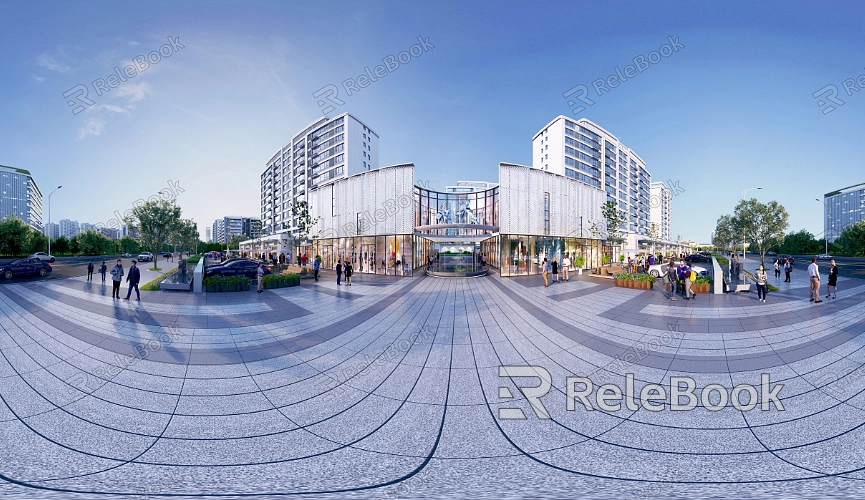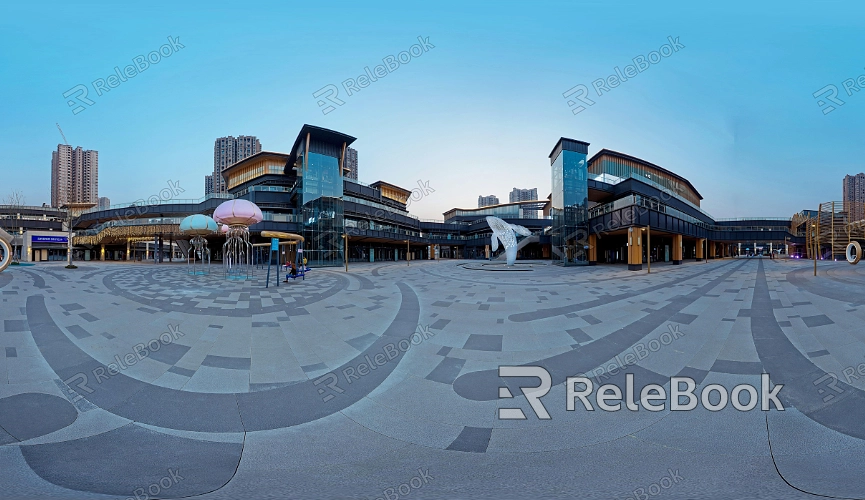What File Formats Are Supported for HDR Textures in Blender?
In 3D software like Blender, selecting the correct HDR texture format plays a crucial role in the rendering process. It impacts not only the quality of the render but also file size, loading times, and overall performance. By supporting a variety of HDR texture formats, Blender provides flexibility, enabling users to choose the best option based on their specific project needs. Below, we’ll explore the main HDR texture file formats supported by Blender, outlining their advantages and common use cases.

Radiance HDR (.hdr) Radiance HDR (.hdr) is one of the most commonly used HDR formats in Blender and many other 3D applications. It's particularly essential for environment lighting and mapping. This format stores a wide dynamic range of light information, making it ideal for lighting complex scenes with detailed brightness data. Due to its widespread industry acceptance, Radiance HDR is often the go-to choice for outdoor scenes or intricate indoor lighting setups.
Advantages: The .hdr format preserves detailed lighting information, especially in high-brightness and shadow areas. It is highly compatible with most rendering engines.
Use Case: It’s particularly useful in scenarios requiring realistic light reflections, such as HDRI environment maps, skyboxes, or 360-degree panoramas.
OpenEXR (.exr) OpenEXR is another HDR format supported by Blender, specifically suited for complex multi-channel rendering tasks. Developed by Industrial Light & Magic (ILM), the .exr format is widely used in the film and visual effects industries because it can store multiple channels of floating-point data, making it perfect for scenes requiring high-precision color information.
Advantages: The .exr file format supports high dynamic range and multiple channels, enabling the storage of additional render passes like masks, normal maps, or lighting passes. It also includes various compression methods to reduce file sizes.
Use Case: It's especially useful for high-precision projects such as movie visual effects, commercial animations, or when you need separate render passes for post-production compositing.
TIFF (Tagged Image File Format) Although not as widely used as Radiance HDR or OpenEXR for environment maps, TIFF is another format that supports HDR images. For projects requiring high-quality still images or specific post-production processing, TIFF can be valuable.
Advantages: TIFF files offer high bit-depth, preserving a rich amount of image data, and are compatible with a range of image editing software.
Use Case: Suitable for advertising images, still frame designs, or images that need additional processing in the post-render phase where precise control over color and brightness is necessary.

Portable Float Map (.pfm) The PFM format is a lesser-known HDR file format used for storing grayscale or RGB floating-point image data. It is mainly found in scientific or specialized rendering workflows. Blender supports PFM files, but their use in mainstream projects is relatively uncommon due to their more niche application.
Advantages: PFM files are simple and support floating-point data, making them useful in scientific image processing.
Use Case: More commonly used in scientific projects or cases where precise mathematical image processing is required, rather than typical 3D rendering workflows.
JPEG-HDR (.jpg) Although JPEG itself is not an HDR format, JPEG-HDR is an extended format that stores high dynamic range images. It embeds extra brightness data into a traditional JPEG file, allowing for HDR effects while maintaining a smaller file size. Blender's support for this format is limited, and designers usually prefer native HDR formats over JPEG-HDR.
Advantages: JPEG-HDR files are smaller, making them useful for web or situations requiring efficient storage.
Use Case: Ideal for lightweight projects or instances where reducing file size without sacrificing too much quality is important.
DDS (DirectDraw Surface) DDS is a texture file format widely used in game engines, offering both compression and support for a variety of texture types. While DDS doesn't provide the same precision as pure HDR formats, it supports a relatively high brightness range, making it suitable for real-time rendering situations that need to balance quality and performance.
Advantages: DDS files support texture compression and fast loading times, making them suitable for real-time rendering.
Use Case: Primarily used in game development or real-time rendering applications, such as virtual reality or interactive 3D applications.
PNG (16-bit channels only) Although PNG is not an HDR format, it does support 16-bit channels, which can store more dynamic range information than typical 8-bit images. In Blender, PNG is often used for storing semi-precision textures rather than full HDR lighting data.
Advantages: PNG files are small in size and support transparency, making them useful for color-rich textures.
Use Case: More suitable for standard texture mapping rather than complex HDR lighting scenes.
When deciding on an HDR texture file format, designers should consider their project’s requirements, the complexity of the rendering scene, and the compatibility of the rendering engine. Blender’s versatility allows it to adapt to different workflows, whether for multi-channel compositing in film production or lightweight applications in real-time rendering. Designers can select from a range of formats to manage resources effectively and optimize both performance and visual quality.
If you're looking for high-quality HDR textures, 3D models, or other assets to bring your projects to life, Relebook offers an excellent selection of resources. You can download textures and models to use in Blender, 3ds Max, and more, significantly enhancing the quality of your renders.

